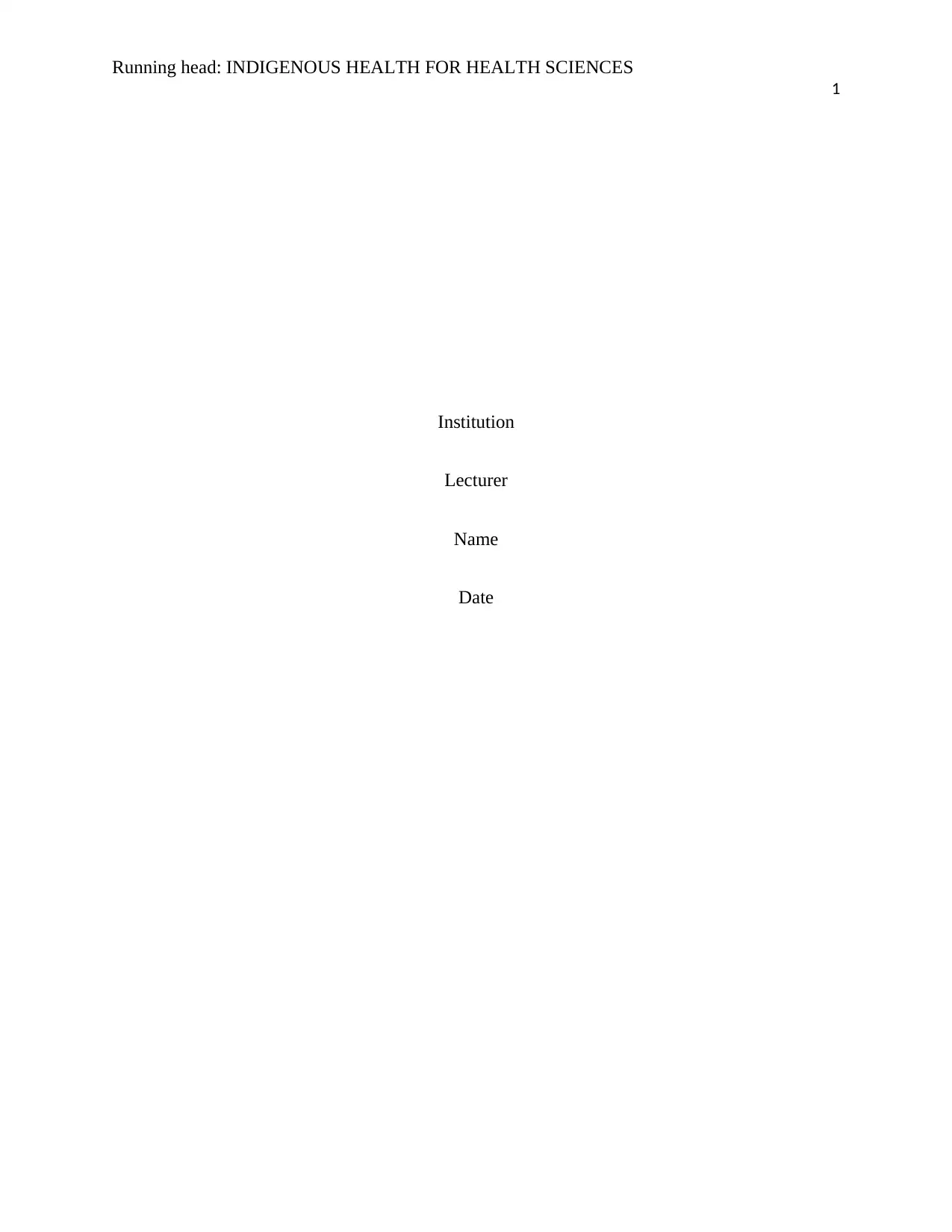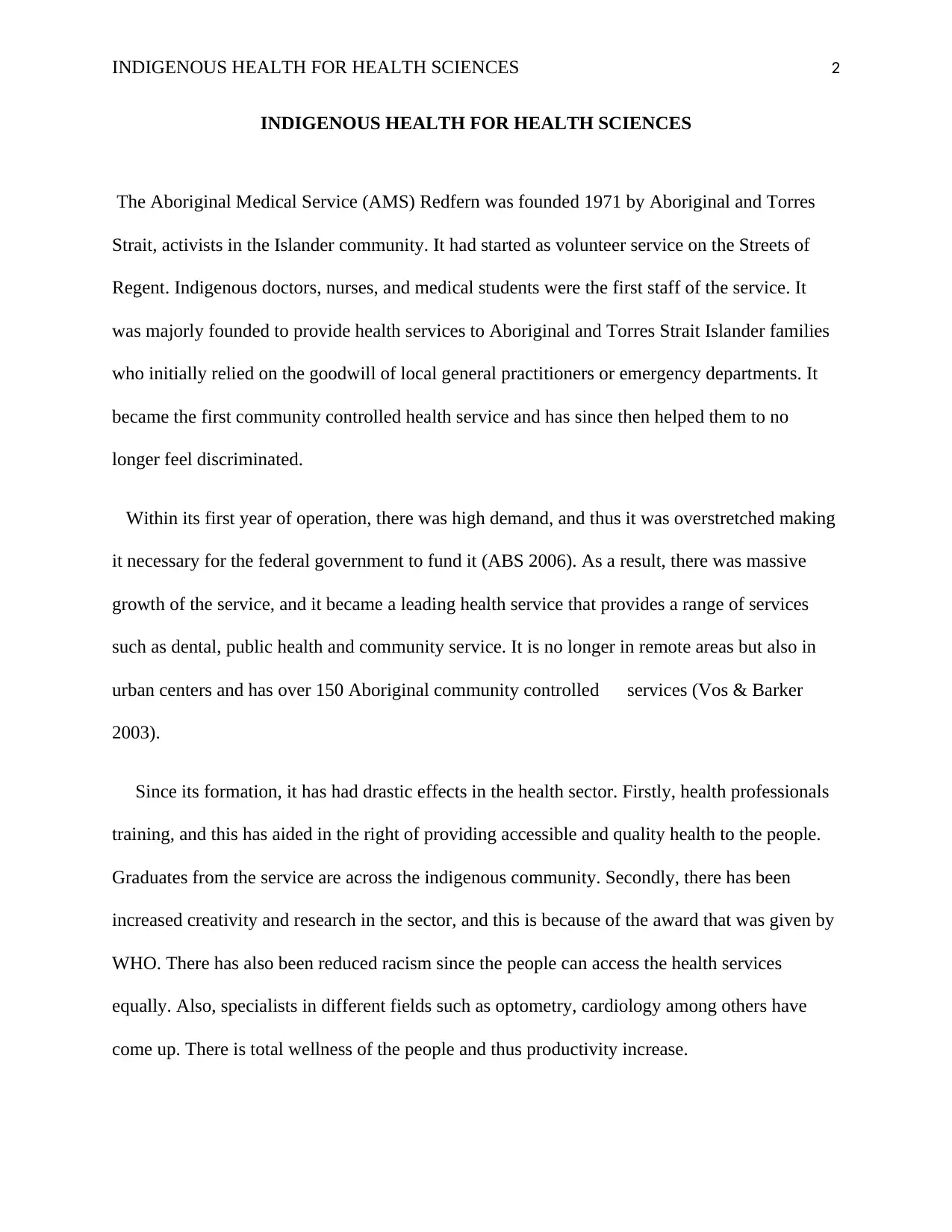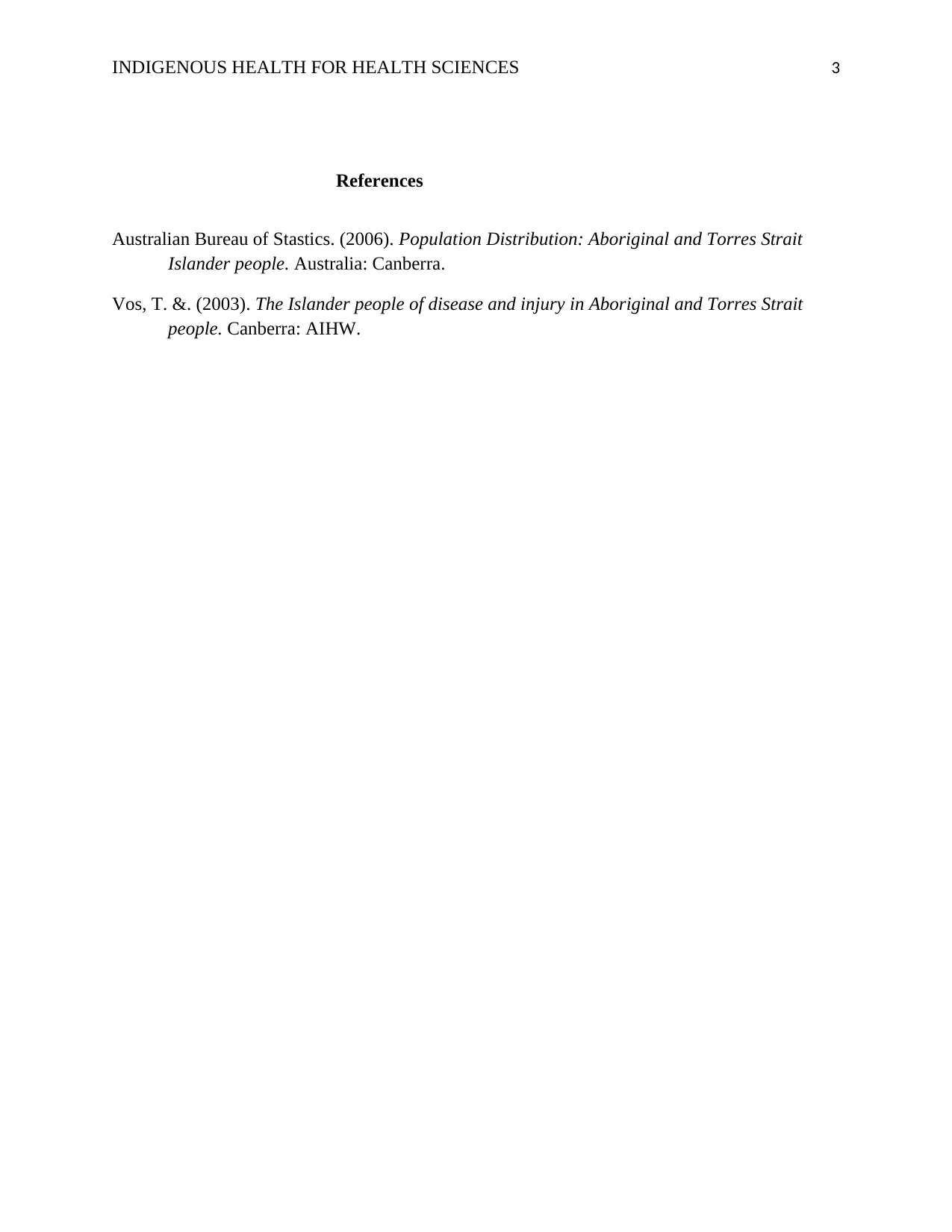Indigenous Health Report: Health Sciences Module, Semester 1
VerifiedAdded on 2020/04/07
|3
|387
|295
Report
AI Summary
This report delves into the significance of Indigenous health, specifically examining the Aboriginal Medical Service (AMS) established in 1971. Initially a volunteer-based initiative, the AMS provided essential health services to Aboriginal and Torres Strait Islander communities, addressing their reliance on limited resources. The report highlights the AMS's evolution into a community-controlled health service, its expansion to urban centers, and its impact on health professionals, research, and the reduction of racism. The report emphasizes the positive outcomes, including increased access to specialists and improved overall wellness within the Indigenous community, and the report references the Australian Bureau of Statistics and the AIHW for data and information.
1 out of 3








![[object Object]](/_next/static/media/star-bottom.7253800d.svg)